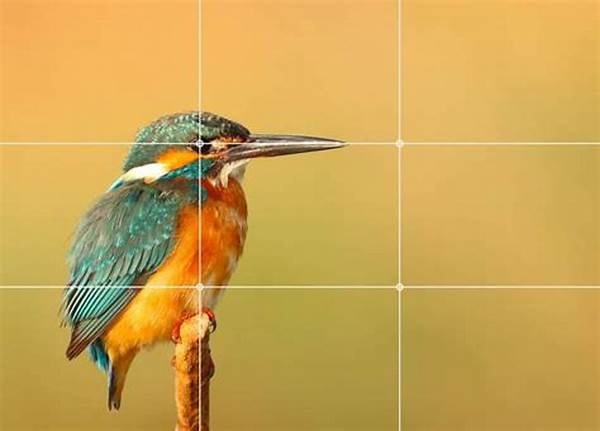Hey there, fellow shutterbugs! If you’ve ever tried pointing your lens at nature’s furriest or featheriest, you know that capturing the perfect shot is no walk in the park. Whether it’s a squirrel showcasing acrobatics or a lion lazing in the sun, animal photography is all about patience, timing, and getting that killer composition. But don’t worry, I’ve got your back with some composition tips for animal photography that’ll elevate your shots from “meh” to “magnificent!”
Read Now : Mobile Camera Framing Strategies
Understanding Your Subject
When it comes to composition tips for animal photography, knowing a bit about your subject goes a long way. Whether you’re snapping photos of your neighbor’s mischievous cat or a herd of wild elephants, understanding their behavior can be a game-changer. Animals have their comfort zones, routines, and unique characteristics. Knowing these can help you anticipate the magic moments before they happen. This will not only improve the timing of your shots but also enhance your compositions as you capture them in their element. Every species has its quirks; use them to create engaging and storytelling images that resonate with your viewers.
Now, I know what you’re thinking: “Do I have to be an animal whisperer?” Absolutely not! But a little observation and research can open up a world of opportunities. So, take your time to study them, either in real-time or through books and documentaries. It’s all about connecting with your subject, which in turn aids in composing captivating images. Keep your eyes peeled and your camera ready; you never know what incredible shot might come your way next!
Framing Techniques
1. Rule of Thirds: One of the most popular composition tips for animal photography is using the rule of thirds. Imagine your viewfinder divided into nine squares and place the animal along these lines. This creates a balanced yet dynamic photo!
2. Eye Contact: When capturing portraits, getting direct eye contact gives your photos an engaging and intimate feel, making viewers connect with the animal on a personal level.
3. Leading Lines: Use elements like tree branches, roads, or streams to guide the viewer’s eye toward your animal subject, enhancing the story you want to tell.
4. Background Check: Mind your backgrounds. A clean, simple backdrop can make your subject pop, while a busy one may distract from the animal’s charm.
5. Frame Within a Frame: Look for natural frames within the environment, like branches forming a circle or gaps between rocks, to draw focus and add depth to your shots.
Capturing Animal Movement
Another essential aspect of composition tips for animal photography is capturing movement. Animals rarely stay still, which can be both a challenge and an opportunity. Fast shutter speeds can freeze motion, allowing you to capture a cheetah mid-sprint or a bird frozen in flight. On the flip side, slowing your shutter can artfully blur motion, giving a sense of speed or chaos, such as a flock of birds taking off.
Playing with motion can really elevate your photos, making them not just pictures but experiences. Imagine the thrill of a dolphin leaping gracefully across the ocean surface or the gentle flow of a deer running through the woods. Movement adds an exciting dynamic to your composition, pulling viewers right into the wild spectacle. So, get experimenting with your settings and unleash the movement magic in your wildlife shots!
Choosing the Right Lens
Speaking of composition tips for animal photography, gear plays its part too. Sure, it’s not all about the tech, but choosing the right lens can drastically improve your animal photography game. Telephoto lenses are great for capturing distant subjects without disturbing them, while wide-angle lenses are perfect for including habitat context in your shots.
1. Telephoto Zoom: Essential for getting close shots of skittish or dangerous wildlife without causing disturbance.
2. Wide-Angle Lens: Great for capturing animals in their environments, providing a sense of place and scale.
3. Macro Lens: Perfect for those detailed close-ups of insects or small critters.
Read Now : Convenient Watermarking Solutions For Images
4. Prime Lens: Offers crisp sharpness and faster shutter speeds for action shots.
5. Lens Hood: Reduces glare and adds contrast, ensuring your subjects are always the focal point.
6. Filters: Polarizing or neutral density filters can enhance colors and manage harsh lighting.
7. Tripod: A must for long-distance or low-light shots, ensuring stability and clarity.
8. Camera Body: While lenses are crucial, a sturdy camera body with good ISO performance is a solid partner.
9. Cleaning Kit: Nature can be messy. Keep your lenses and camera spotless for optimal performance.
10. Extra Batteries: Don’t get caught in the wild with drained batteries—always carry spares!
Getting Close Without Disturbing
One of the golden composition tips for animal photography is getting close without causing a ruckus. It’s often the close-up shots that reveal an animal’s personality and intricate details—from the texture of an elephant’s skin to the alert eyes of a fox. But remember, it’s crucial to maintain a respectful distance to avoid distressing the animals.
To sneak closer without intruding, leverage your lens capabilities. Telephoto lenses are lifesavers, letting you zoom in from afar while blending into the background. Patience is your friend here; let the animals get comfortable with your presence. Over time, trust can build, resulting in genuine, up-close captures that truly speak to the essence of these creatures. Apply this bit of wisdom, and you’ll soon be boasting a gallery full of intimate portraits!
Mastering Lighting Conditions
Now, lighting can be both a blessing and a curse in animal photography. Understanding how to work with natural light is a game-changer—and a key composition tip for animal photography. The golden hours—early morning and late afternoon—often provide soft, warm lighting perfect for shooting. On the other hand, bright midday sunlight can be harsh, causing unwanted shadows or blown-out highlights.
For those tricky lighting situations, don’t forget about reflectors or diffusers, which can help soften shadows or bounce light where needed. And when in dense forests or overcast days, be ready to boost your ISO settings to accommodate for lower light levels. Lighting doesn’t have to be a wild card but rather an element you harness to highlight and complement your furry subjects. Trust your instincts and adapt to the ever-changing dance of light and shadow to craft impressive animal portraits.



